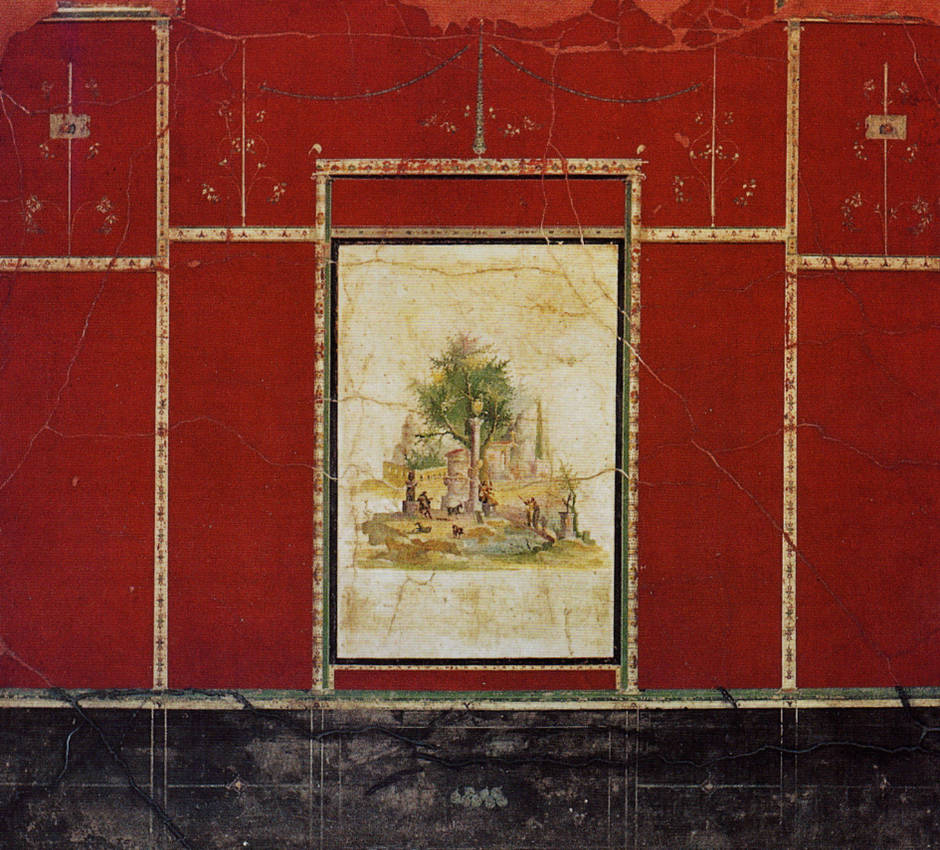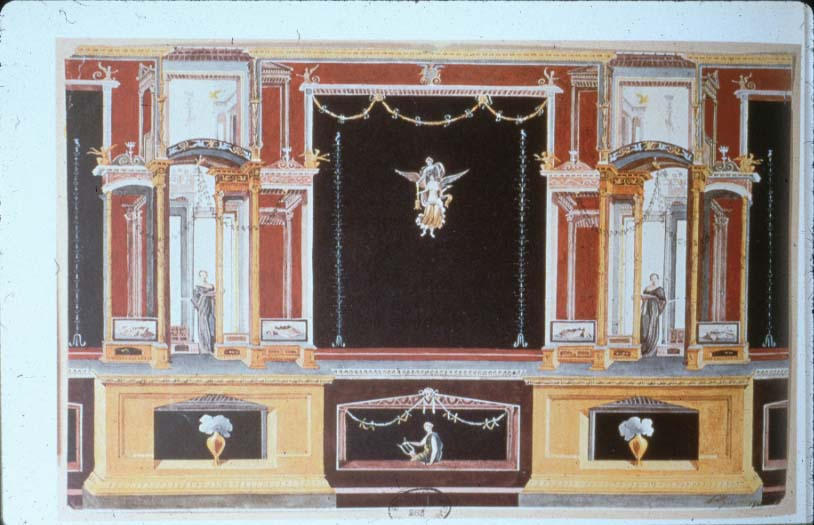Even more varied than the architecture was the art. There were four styles of Roman painting found in Pompeii. The First Style, known as Incrustation, was found very notably in the Samnite House. Heavily influenced by the Greeks, their trading partners, the painters who worked with Incrustation attempted to mimic marble by molding the plaster on the wall into raised backs. They usually divided it into three horizontal and very colorful panels, such as in the aforementioned Samnite House, above (“Four Styles”).
Architectural, the Second Style, was used to open up the space of the relatively small houses in Pompeii. Painters of the Second Style would use illusion, perspective, and shading to make the rooms seem larger than they actually were. They would paint entire second rooms on walls and often included little details like famous paintings of the day to make them appear more realistic (“Four Styles”).
The Third Style was called Ornamental and rejected intricate and detailed illumination in favor of smaller, more decorative pieces that would often sit alone in the middle of a section of wall. Large columns were painted to separate the sections out, and the pieces would be placed in the center, similar to modern-day art galleries (“Four Styles”).
Intricate was the name of the fourth and final style. This style fails to resemble believable space; it revives the decorative detail of the Third Style, but instead of focusing on perspective, it focuses exclusively on that detail, as you can see above. There were a lot of geometric forms, and many of the simplistic elements of the Third Style could be found in abundance (“Four Styles”).
Pompeii is considered by many to be a living city. Although its original residents are long gone, the city still teaches new things to people from all over the world every single day (Fig. 17). When I visited Pompeii, I was struck by the sense of history that reverberated throughout the entire city. I could feel that I was in an ancient place, somewhere that has seen more than I could ever imagine. I suppose that’s the draw of Pompeii: The knowledge that you are in a place with such an incredibly long, intricate, and fascinating story that it would never be possible to tell it all. Visiting places such as this is the closest thing humans have to time travel.
![]()
![]()
![]()







